-
Posts
14,343 -
Joined
-
Last visited
-
Days Won
25
Content Type
Profiles
Forums
Blogs
Gallery
Events
Store
Posts posted by Ed_Haynes
-
-
2-
42378 Sapper Ujagar Singh, Bombay Sappers and Miners Group
Not a terribly unusual group, but one that wants research. Pre-Dec. 1941 in Mayala, possible/probable POW?
1- Independence Medal 1947 - unnamed
2- 1939-45 Star - 42378 SPR. UJAGAR SINGH, BOMBAY S. & M. GP.
3- Pacific Star - 42378 SPR. UJAGAR SINGH, BOMBAY S. & M. GP.
4- Defence Medal - unnamed
5- WWII War Medal - 42378 SPR. UJAGAR SINGH, BOMBAY S. & M. GP.

 1
1 -
Thanks for the thread, Darrell. I'll try (try!) not to bore people here witha few postings that I have not put up on my other threads (http://gmic.co.uk/index.php?showtopic=2400 or http://gmic.co.uk/index.php?showtopic=2331 or http://gmic.co.uk/index.php?showtopic=2450)
1-
Lieutenant-Colonel Barkat Khan, Bahadur, Maler Kotla Sappers and Miners
A puzzling group. Which ones aren't?!
1- Order of British India, 2nd class -- not his, but shown here representationally -- 17 August 1917 for Mesopotamia to Major Barkat Khan, 1st Company Maler Kotla Sappers and Miners (ISF List 1 Jan 1918, p. 64b)
2- India Medal, 1895 - clasps Punjab-NWF, Samana, Tirah -- missing, but shown in war services section of ISF List 1 Jan 1918, p. 72 -- anyone have it???
3- China 1900 -- "51 Havildar Barkat Khan, Malerkotla I. S. Sappers"
4- British War Medal -- "MAJ BARKAT KHAN, MALERKOTLA I. S. SPRS."
5- Allied Victory Medal -- unnamed, but it came with the group -- restoration? -- he was not mentioned in despatches
6- Durbar 1911 -- unnamed -- not on roll, but shown as qualified in ISF List 1 Jan 1918, p. 81 -- self-awarded?
7- Jubilee 1935 -- unnamed -- shown on roll (p. 62) as "Major Barkat Khan, O.B.I., late of tha Malerkotla State Forces"
Shown in ISF List 1 Jan 1918, p. 50 as
Lieutenant-Colonel Barkat Khan
Commandant, 2nd Reserve Company, Maler Kotla Imperial Service Sappers
Entered service 6 June 1891
Appointed to the corps 6 September 1891
Present Appointment 1 April 1917
Order of British India, 2nd class
His war services and other medal entitlements are as shown above
Head and McClenaghan, vol. V, pt. II, add some to to this.
Is he probbaly not missing a 1914-15 Star, as he seems to have been sent out to Mesopotamia only in Februarty 1916 with a draft of reinforcements. The group would be missing the IGS 95 and "his" Victory Medal. BUT, in taking to other ISF collectors, a pattern of unnamed Victory Medals for the Malerkotla Sappers seems to be emerging?! Likely not missing an IGS08 for Afghanistan, as only the 1st company seems to have been deployed.
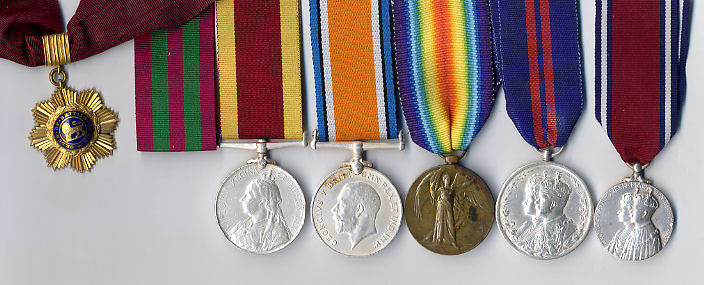
 0
0 -
The reverse is blank?
0 -
EGYPT -- Medalyet Falasteen / Palestine Medal
Awarded to Egyptian armed forces personnel who served in the 1948-49 Arab-Israeli War. In 1953, with the revolution, the design of the medal was altered, with the earlier reverse being worn as the obverse of the medal. Established: 1948?, revised ???? Obverse: 36 x 45 mm, bronze, seven-sided, with unequal sides, seeming "off balance" to the left (until 1953). first variety: King Faruq facing left [not, as it has sometimes been described, Nasser!], between the Egyptian parliament building (to the right) and the Al-Aqsa mosque in Jerusalem (to the left); above "Medalyet / Falasteen", or "Palestine / Medal". second variety: three soldiers, with civilians gathered around them, dated "1948-1347" or "1948-1347" (the reverse of the pre-1953 variety). Reverse: first variety: three soldiers, with civilians gathered around them, dated "1948-1347" or "1948-1347" (the obverse of the post-1953 variety). second variety: blank. Ribbon: 35 mm, equal stripes (5 mm each) of green, red, yellow, red, green. A brass lotus blossom has been observed worn on ribbon bars representing this medal, though it is unknown what this represents.
-- first variety with the king on the obverse
-- second variety with the old reverse moved to the obverse
0 -
Yeah, and the youth (Boy Scouts?) uniform seems to me to be the only 100% legitimate uniform here. I would appreciate closeup scans of the medals, if possible, the single one of the second uniform especially. It is on the "Mother of Battles" Medal ribbon, but is not that medal. Medals and ribbons on these uniforms are impossibly random.
0 -
Until recently, the multi-volume Frontier and Overseas Expeditions from India series had been online as a PDF, but, as with so many things on the internet, it seems to have gone walkabout. Just more evidence why the internet will never be a substiutute for real sources (books, journal articles, etc.).
I know that Gordon's British Battles and Medals has bene recomemnded in your other thread on the same topic so I'll not repeat it here.
Untimately, F&OE is the source here. Will check the reference (volume, chapter, pages) when I get home.
0 -
A nice group. I await more, anxiously.
To complete the eye-candy, could you add a scan of the awards? Sure., we know what they look like, but . . . .
I have sought such a group for some time, with no joy. Lucky you!
No PDRA awards?
Lovely, thanks for sharing.
0 -
While I know little about uniforms, anywhere, not even India (except contemporary), the only one that looks 100% is the kids' one. But that is just an opinion.
0 -
What a sad sad set of jokes. Some real, most not. But if there is a market . . . .
 0
0 -
And the image from the back cover, items:
55805581 / 5583
5579

 0
0 -
While such things lie mostly way (WAY!) outside my area of interests, I occasionally tease myself by reading through old auction and other catalogues. As I was looking through the auction catalogue for Graf Klenau's 86th auction, 1 December 1973, and came across some toys that might be of interest here.
The auction estimates are in DM, 1973 DM.
Where are they now?

 0
0 -
"Criminal behavior" is too small a word.
 0
0 -
One problem, and one no one has really been able to address, is that WWII stars and medals were made, in the 1940s and 1950s, by mints all over the world and were awarded, completely legitimately, to commonwealth personnel for their service in WWII. The quality of manufacture and the colour of metal used differed, as did the design. As most of these were unnamed, no one at the time worried much about what was "real" and what wasn't. In the interim, veterans who lost or sold or misplaced their medals just went to the military taoior and got replecements. In many cases, these replacements were worn as if they were the "originals", and in some cases they were better made than the originals had been. In no case was there an intent to defraud the collector (until recently, only the ACE or BofB clasp would have repaid that effort).
I hate to say it, but most people haven't thought about cheating collectors on WWII medals until recently.
But what is an "original" and what is a "copy" in this complex situation?
0 -
Most would assume US law applies only in the US, but, these days, . . . ???
What's that knock at the door . . . ???
0 -
Is it appropriate to post commercial links? Management may remove this is the answer is "no":
http://www.liverpoolmedals.com/
Ther are all escaped from one of the manufacturers, none were ever awarded, so they're of dubious standing in a collection. They are also viewed by the ever-vigilant FBI as being stolen goods, in addition to being Medals of Honor, so I guess they're doubly illegal.
0 -
Just the sort of collective research that fora like this should be the best for doing!
Bravo to all involved.

(From a WAY outsider to the material.)
0 -
Any photos of these in wear?
0 -
No, this system has been carefully and intentionally wiped out as a last remnant of the bad old feudal days. Article 18 of the Indian constitution is there specifically to strike at the heart of what was seen as a system of fawning toadyism to the Brits. Only among the remnant Indian royals does the system continue, but in the pre-British sense that titles always ran deep beneath the surface, even in British days, when they tried to extinguish this, for the King-Emperor was to be the only Fount of Honour. A fascinating tale, I think, and one I am involved in weaving together and teasing out of the archives.
0 -
It was a very complex system that changed over time. To simplify:
First standardised in the 1890s, drawing on systems of granting titles for acivement that pre-dated British rule in India.
At the time of the 1911 Durbar, at the suggestion of Maharaja Ganga Singh of Bikaner, badges were introduced to provide a wearable augmentation to the title (which became part of one's name).
Basically, there were three levels.
First:
Khan Sahib -- for Muslims, Parsis, and Jews
Rao Sahib -- for Hindus and Sikhs (non-Punjabi) in southern India
Rai Sahib -- for Hindus and Sikhs (non-Punjabi) in northern India
Sardar Sahib -- for Sikhs (in Punjab)
In general, you'd be appointed first to this lowest level and then promoted, though numerous exceptions were made. Indian Christians were appointed depending on what they were before their conversion, or failing that, as honorary Muslims. Buddhists and Jains were treated as honorary Hindus (except in Burma, where there was a completely separate title system). There was no provision for Anglo-Indians ("Eurasians") and this produced some tensions and a demand for 4th and 5th classes of the Order of the Indian Empire. All of this was part of the religious construction of India by the British (much like Ireland in this regard).
Second:
Khan Bahadur -- for Muslims, Parsis, and Jews
Rao Bahadur -- for Hindus and Sikhs (non-Punjabi) in southern India
Rai Bahadur -- for Hindus and Sikhs (non-Punjabi) in northern India
Third:
Sardar Bahadur -- for Sikhs (anywhere) and Baluchi Muslims only
Diwan Bahadur -- for Hindus only, mainly in the south
So the usual track would be:
Hindu: Rao/Rai Sahib => Rao/Rai Bahadur => Diwan Bahadur (very rare at top level)
Muslim: Khan Sahib => Khan Bahadur => Sardar Bahadur (in Baluchistan only)
Sikh: Sardar Sahib (in Punjab) or Rao/Rai Sahib (elsewhere) => Sardar Bahadur (a very rare leap)
This was, of course, complicated by the fact that "Sardar Bahadur" was also used for the OBI 1st class; this overtsight produced MANY problems.
This is a a gross over-simplification of a fascinating tale.
For those who have "doubts" (to put it mildly?) about civil Title Badges, try this:
Rai Sahib, GVI, Not. No. 141-H of 8 June 1944: ?Babu Promode Ranjan Guha, Assistant Engineer, Bhagalpur, Bengal?. Shown additionally as ?Offg. Executive Engineer? and ?Bihar Engineering Service, Class II?. Pay Rs. 580/month.
PSV, 47-H/1944:
?Mr. Guha was appointed as a permanent Assistant Engineer in the Bihar Engineering Service, Class II on 27.7.29. Throughout his service he has done consistently well.
?In the disturbances of 1942 ["Quit India" Movement], he was in combined charge of two outlying subdivisions of the Son Canals ? Nokha and Nasrigang. He was at Nokha when a mob consisting of many hundreds of persons attempted to raid the canal office and treasury but were kept at bay by the Subdivisional Officer (Mr. Guha) with the help of his staff. Menawhile, in the nearby town of Bikramganj, rioters became completely out of hand and caused much damage including the destruction by fire of a Canal inspection bungalow. As police were not available for protection, Mr. Guha became very perturbed about the safety of the Govt. Treasure at both Nokha and Nasriganj offices. Collecting the Nokha treasure in his car, he left secretely by devious roads at dead of night for Nasriganj and after securing the treasure there, he motored at high speed to the headquarters of his Division, Arrah. This he succeeded in reaching in the early hours of the morning after traversing 60 miles through some of the most disturbed areas. In this way, Mr. Guha avoided the loss of many thousands of rupees to Govt. ? a loss, unfortunately, that could not be prevented in another subdivision alongside. The mob refrained from raiding the Nokha office when the information got around that the treasure had been removed but the Nasriganj office was burnt to the ground.
?Within a few hours of his arrival at Arrah, Mr. Guha volunteered to accompany a Military party for restoring communications to Sasaram and Buxar and for this purpose collected and took with him staff for the repairs of bridges etc.
?Later, when it was essential to have an energetic Executive Engineer to be placed in charge of the Bhagalpur Division for the urgent construction of a new Camp Jail, Mr. Guha was specially selected for this post, although he was a junior officer which made it necessary that his appointment should be an officiating one. In this charge he had shewn exceptional ability, completing this very large jail in a remarkably short time and in all respects to the stringent requirements of Govt.
?He has not been recommended on this occasion or during the same year for any other title.?
Yes, it in my "custody".
0 -
Diwan Bahadur Keshavrao Bapuji Tillou, Revenue Minister, Indore State, Central India
1- Indian Title Badge, George V, second variety, 1st class, Diwan Bahadur - Rao Sahib Keshavrao Bapuji Tillou 1st February 1937
The ribbon is incorrect (as is usual) and is the CGM(F). I hope to be able to fix this "soon".
Rao Sahib Keshavrao Bapuji Tillou, Revenue Minister, Indore State, Central India - Not. No. 77-H of 1 February 1937
F&P 66(2)-H/1936:
?Mr. Keshavrao Bapuji Tilloo received the title of Rao Sahib in 1930 after putting in 27 years good service in the Revenue Department of the Holkar State. Since then his rise has been rapid as, after two years as Commissioner, he became Revenue Minister in the State Cabinet. He has recently received a year's extension in that capacity and is likely to retire in 1937.
"The Prime Minister spoke to me recently about the earnest desire of His Highness the Maharaja Holkar that, following upon the rceent conferment of a Knighthood upon himself (Sir S.M. Bapna), some recognition shpould be accorded to his colleagues who share with him the credit for the very sucessful and stable administration of the Holkar State since His Highness came to power. His Highness hopes that this recognition might take the form of a grant of the title of Dewan Bahadur to Rao Sahib Tilloo and Rai Bahadur to the Finance Minister, Mr. S.V. Kanungo. The latter is still comparatively young and it is considered inappropriate that he should be honoured with a title until the services of Rao Sahib Tilloo have received further recognition.
"The Rao Sahib is undoubtedly an admirable officer whose untiring energy and straightforward unassuming personality have won widespread respect. Admittedly his promotion from Rao Sahib to Dewan Bahadur within 6 years would be somewhat exceptional, but His Highness feels that his position as a senior member of his Cabinet justifies the proposal, and the tile of Rai Bahadur would not be welcomed. The Holkar State have, in recent years, been very modest in their recommendations for titles for their officials and in the special circumstances I strongly support the recommendation not only on its own merits but as a tribute to the progressive ideals and admirable standard of the administration at Indore which has attained a level incomparably superior to that prevailing in the time of His Highness's father and grandfather.
"Rao Sahib Tilloo, being a Jagirdar of the State and having excellent pensionary prospects, is in my opinion fully qualified to maintain the high position of a Dewan Bahadur."
The 1933-1937 variety with left-facing bust. Gilt almost entirely intact and bright! Wear from breast ribbon.
2- George VI Coronation Medal - unnamed
On Indore State roll. Gosh, this scanned badly!
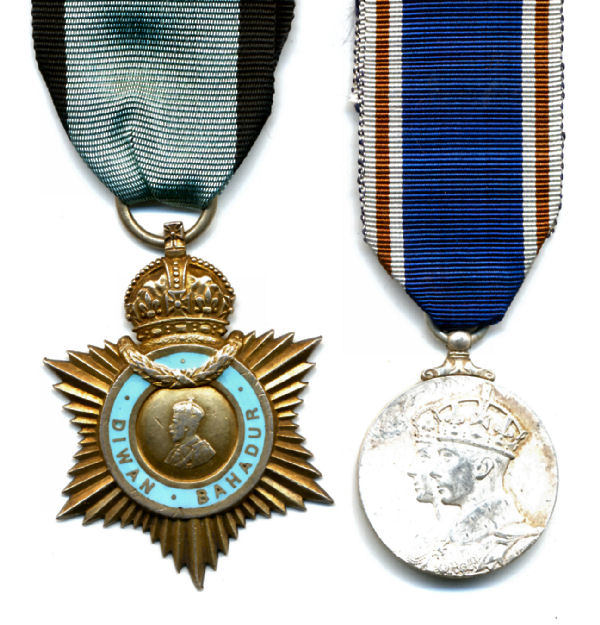
 0
0 -
Khan Sahib Bhicajee Dadabhoy, Military Accounts Department
1- Khan Sahib, George V - Mr. Bhicajee Dadabhoy 1st Jany 1920
No. 17-I-C of 1 January 1920 ? Khan Sahib to ?Mr. Bichajee Dadabhoy (retired), Office of the Controller of Military Accounts, 6th (Poona) Division?
F&P, Internal B, February 1920, 436-442:
?Mr. Bicajee Dadabhoy rendered loyal and faithful service to Government for a period over 31 years and retired in December 1916. On offering his services in connection with the war, he has been re-employed on Rs. 250 per mensem since June 1918 and has been of great help to the Field Accounts Officer, Aden, in organizing and running his office where he carried out his duties as Head Clerk, most efficiently. He is absolutely trustworthy, is a well known and much respected member of the Parsi community and the proposed title will be a fitting reward for a long and useful career spent in the service of Government.
?The Local Government has no objection to this recommendation.?
2- 1914-15 Star - B. DADABHOY, MILY. ACCTS. DEPT.
3- British War Medal - KHAN SAHIB ~~~ B. DADHABOY, M. A. D. (renamed by obscuring "MR." and adding "KHAN SAHIB")
4- Victory Medal - KHAN SAHIB ~~~ B. DADHABOY, M. A. D. (renamed by obscuring "MR." and adding "KHAN SAHIB")
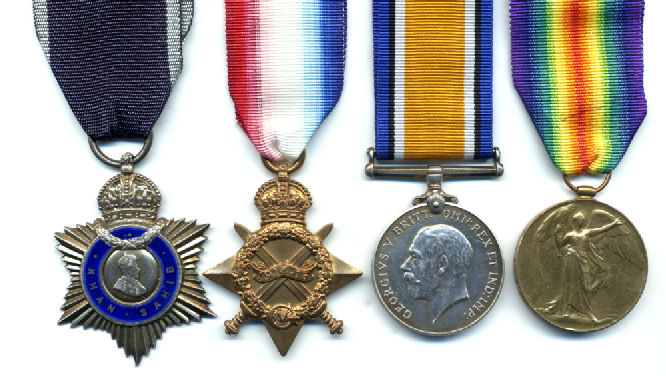
 0
0 -
If there is any interest, I could post more, but I am not anxious to bore you-of-other-interests.
While I snooze off over the 385th maker-variety of identical WWII German wound badges, I know not everyone is as turned on by Title Badges as I.
 0
0 -
And the later, cleaner, dated Shahbaz Khan naming:
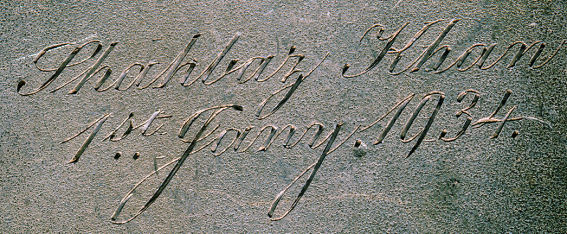
 0
0 -
Despite the prevailing bias toward army awards (and men in uniform?) --the forum's title? -- the civilian awards are often much more interesting and much more uncommon (e.g., Panchanan Ghosh's pair).
Reserve namings? Sure. Gald to oblige (and glad there is interest).
First, Abdul Rauf Khan's -- pretty beaten up, so it may not scan well? This badge has been worn a lot as was approtiate in his era, around the neck, so it has taken lots of "hits". His is from the first, undated, retrospective set of George V awards.
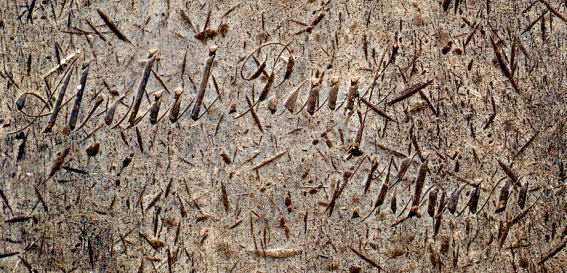
 0
0




WW1 and WW2 Commonwealth Groupings
in Great Britain: Orders, Gallantry, Campaign Medals
Posted
3-
21633173 Grenadier Dharam Singh, Grenadiers
1- Sainya Seva Medal - Jammu Kashmir - 21633173 GDR. DHARAM SINGH, GRS.
2- The Indian Independence Medal, 1947 - 21626 SEP. DHARAM SINGH, GRS.
3- 1939-45 Star - 2633173 SEP. DHARAM SINGH, IND. GRS.
4- Burma Star - 2633173 SEP. DHARAM SINGH, IND. GRS.
5- The War Medal, 1939-45 - 2633173 SEP. DHARAM SINGH, IND. GRS.
6- The India Service Medal, 1939-45 - 2633173 SEP. DHARAM SINGH, IND. GRS.
A nice all-named pre- and post-1947 group.
(Enough for now, can/will add more later if others can stand it.)